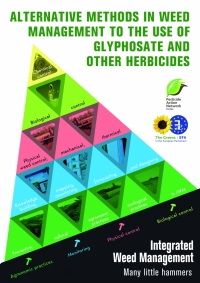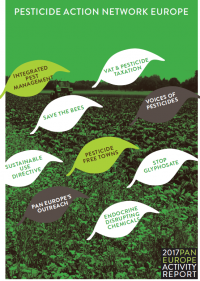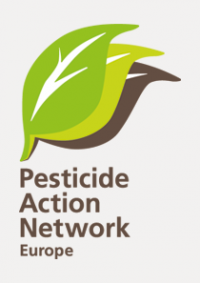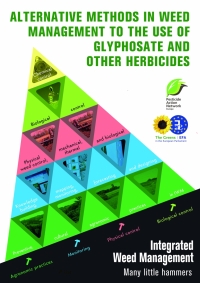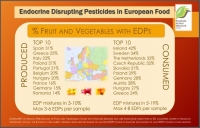Reports
Alternatives to Herbicide Use in Weed Management – The Case of Glyphosate
This second edition of the report on ‘alternative methods in weed management to the use of glyphosate and other herbicides’ has been published as a contribution to the ongoing discussions among some Member States, led by France, on phasing out glyphosate and promoting alternatives.
Activity Report 2017
This Annual Report outlines our work in 2017 to seriously reduce dependency on pesticides in Europe and to support safe and sustainable pest control methods. Enjoy reading!
Ríos hormonados: Contamination of Spanish Rivers with Pesticides
Extensive Presence of Endocrine Disrupting Pesticides in Spanish Rivers- SUMMARY in English
Industry wrItIng Its own rules
Research done by the Pesticide Action Network reveals that in 92% (11 out of 12) of the EU-methods for pesticide risk assessment ex- amined, it was the industry that designed and/or promoted their regulatory use. Industry is writing its own rules. This is a major con- ict of interest. The cases concern criteria and methods (risk assess- ment methodologies) on HOW the rules of the pesticide Regulation 1107/2009 should be used in decision-taking on individual pesticides. In most cases European Food Safety Authority, EFSA, drafted the guidelines on the use of these criteria and methods.
PAN Europe's reaction to the assesment report on the sustainable use of pesticides Directive
PAN Europe reaction to the long-awaited evaluation report on progress in the implementation of Directive 2009/128/EC on the sustainable use of pesticides
Playground contamination study in South-Tyrol
South-Tyrol Organisation for Nature Conservation and Environment Protection, in collaboration with PAN Europe, recently published a report on the contamination of local playgrounds by pesticides from industrial apple production. Grass samples reveal that 40% of the playgrounds are contaminated by pesticides, exposing local children to toxic chemicals.
Glyphosate Dismissal - Technical Report
Regarding the manipulation of science in the toxicity evaluation of glyphosate, much has already been said: the Monsanto papers, the copy/paste affair from the dossier into the RAR and other incidents show that industry has largely influenced the analysis of available science in the dossier to guarantee the approval of its pesticide product for market use. In commissioning this report, Générations Futures and PAN Europe wanted to find out how studies showing negative effects of glyphosate are wrongfully (unscientifically) dismissed during the pesticide safety evaluation procedure.
Alternative methods in weed management to glyphosate and other herbicides
The present report aims to emphasise that we already have all the tools necessary to gradually start building a pesticide-free agricultural model and to confirm that weed control is possible using other means than harmful herbicides. The first edition was published in October 2017 has been revised in July 2018.
This report outlines the wide range of non-chemical alternatives to herbicides that are already available and used by groups such as organic farmers and those practicing integrated weed management (IWM). It highlights the critical need for mainstream farmers and growers to make much wider use of these tools, and the need to expand and improve current non-chemical tools while also developing novel approaches where current techniques are not effective enough. Using glyphosate-based herbicides as a reference, the current analysis presents a wide variety of weed management approaches that achieve highly effective weed control without the use of herbicides.
Read further in the revised version of July 2018>>
Endocrine Disrupting Pesticides in Food
Carcinogens in our food
EU policy provides that people are not exposed to carcinogens1. This means that alleged 'safe levels of exposure' (thresholds) shall not be applied to carcinogens and any exposure to these chemicals prevented. The industry sector has been attacking EU's policy on carcinogens for decades as one of their major lobby campaigns and has been promoting time and again the introduction of 'safe' thresholds.
